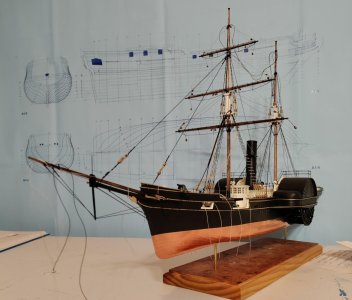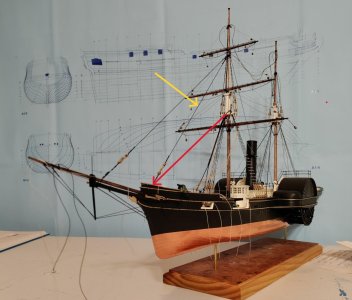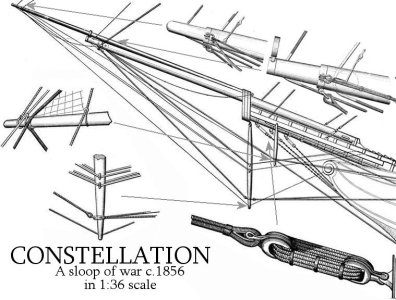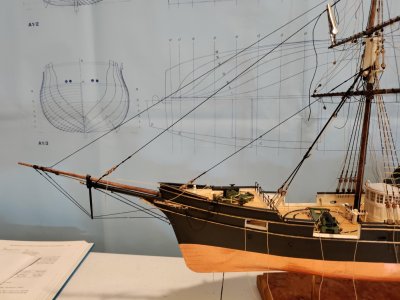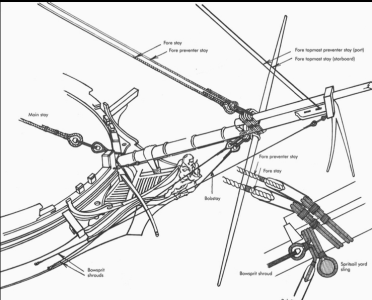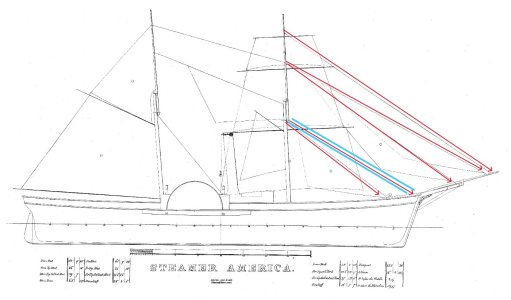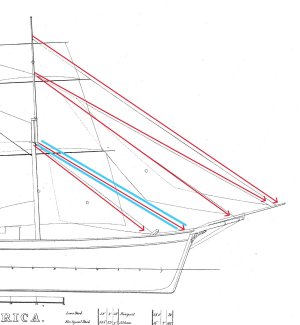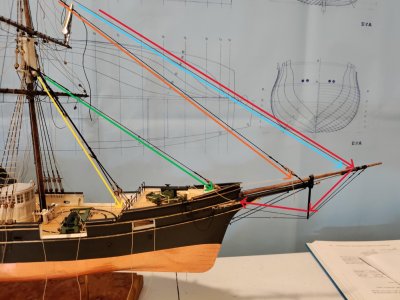I looked through this topic from the beginning, but couldn't find any real details of the head-rigging posted, but...
normally the fore-stay(s), and the fore-topmast stay(s) go to fixed point at the base of the bowsprit and not quite the end of the bowsprit respectively. The other stays go through a sheave or bee-hole in the jib-boom and flying jib-boom (if there is one) and either down over the dolphin-striker and back to, or straight back to the bulwark on either side of the bowsprit (knight-heads). They're adjusted by bullseyes and lanyards, (or rigging-screws on larger ships by this time frame).
Yours is a steamer built by a merchant ship-builder basically conscripted into being a warship. You're right to assume her building and rigging would follow what they've built before clippers and merchant steamers.
There's a lot going on in the head-rigging, and it was evolving through the 1840s through the 1860s.
On purpose-built warships it eventually evolved into this:
View attachment 500597
A lot of this ported over from merchant carriers (clippers), the navy used less iron-work and chain through the 1840s.
Welcome to the world of thinking you have it only to find out it wasn't that way, after you've built it.




 Thank you so much! Yes, I was trying to Google my way to the answer and figured out my mistake in terminology.
Thank you so much! Yes, I was trying to Google my way to the answer and figured out my mistake in terminology. 